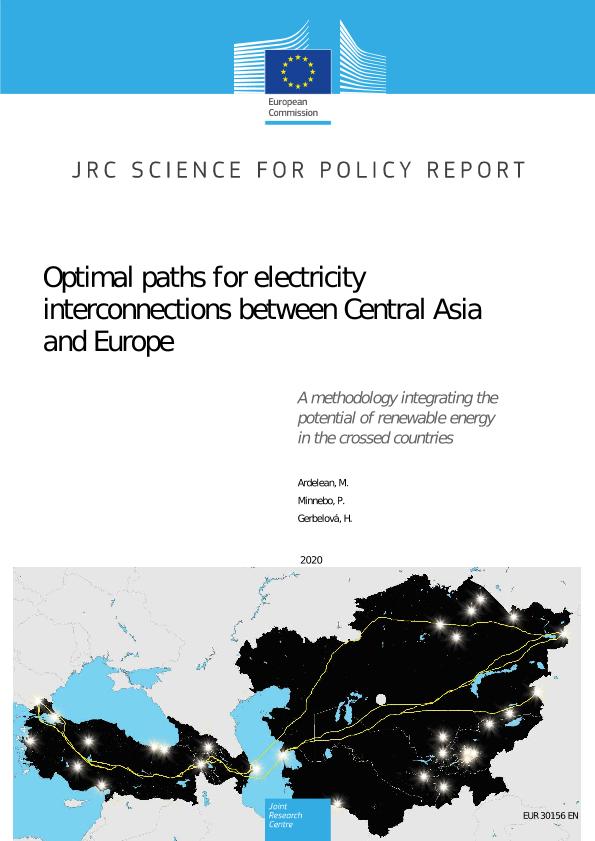
The European Union is increasingly considering energy cooperation with Central Asia as this is a relatively nearby and stable region with tremendous energy resources. Locally produced electricity – i.e. predominantly from gas and hydro and potentially from solar and wind energy – offer opportunities for beneficial electricity trade, both among the Central Asian countries and with the European Union. As such, Central Asia may contribute to the European Union’s security of electricity supply and the achievement of its renewable energy targets. Underpinning policies and strategies for improved energy connectivity with Central Asia and the use of renewable energy sources in this region have been developed. However, efficient electricity interconnections are still lacking, hindering the full potential of Central Asia’s energy resources. Against this background, this report presents a methodology for the computation of optimal electricity transmission routes, crossing Central Asia, the Caspian Sea and the Transcaucasia towards the European Union. This methodology, which is based on the concept of friction maps, makes use of a set of 13 input variables and is implemented in geographic information system software. For each pixel of the friction map, covering the addressed countries, a crossing cost is calculated from semi-quantitative friction scores, which are locally attributed to the variables. Starting from the final cost surface, which represents a composite weighted map of the constituent variables, the software model successfully evaluates the least-cost paths for electricity transmission throughout the considered region. It is found that the evaluated route is most sensitive to the renewable energy potential across the considered region and not to the already existing electricity assets.
